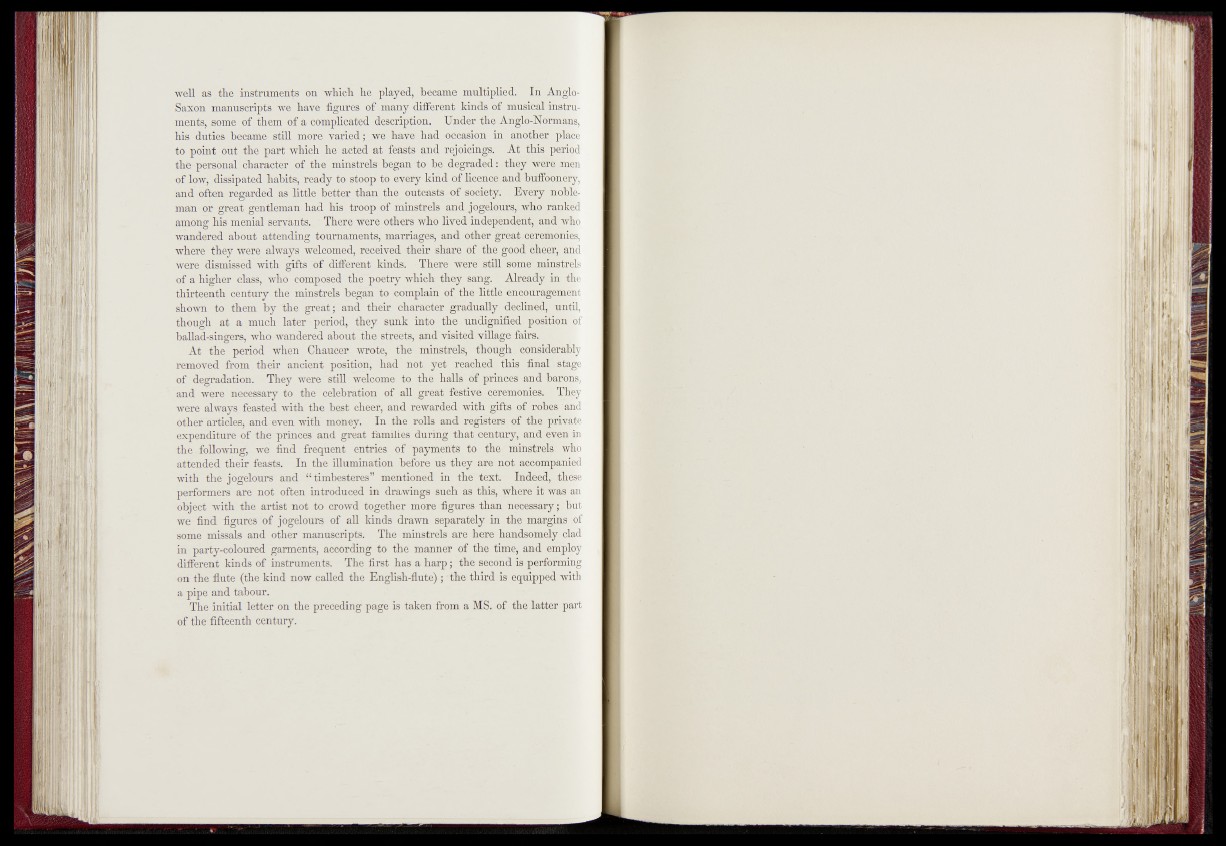
well as the instruments on 'which he played,. became multiplied, l^^Sglo-
Saxon manuscripts we have figures of many different kinds of musical instruments,
some of them of a complicated description, f inder tlie Anglo-Normans,
his duties became-" still more varied; . we .have’ had occasion in another place
to point out the part which he acted at feasts and rejoicings. At this Period
the personal' character of the minstrels began to be degraded: they were .men
of low, .dissipated habits, ready to stoop" to every kind of licericp an%bj|ff6onery,
fed-.often regarded .as little; bettor than the, outcasts-of society. Every K f le-
man or great, gentleman had his troop of minstrels and;jogeldurs,,.who ranged
among .his menial servants. There were others who lived independent, and mo
wandered about attending tournaments, marriages, and other great .ceremonies,
where they were always welcomed, received -their share of the good cheer, fed
were, dismissed with gifts of different kinds. There were still somefpfiinstrels
of a higher class, who composed the poetry which they sang. Already in .the
thirteenth century the minstrels began to complain of the little encouragement
shown to them by the great; and their character gradually declined, until,
though at a much later-'period, they sunk into the undignified- position of
ballad-singers, who wandered about the streets, and'visited village fairs.
At the period when Chaucer wrote, the minstrels, though .^fetidhrably
removed from their ancient position, had not yet 'reached this finals stage
of degradation. They were still welcome to fee-halls of princes and^'^ons,
and were necessary to the celebration of all great festive^gpremonies. jjflhev
were always feasted with the best cheer, and rewarded with gifts of,,^bb| p .ind
otherfetides, and oven with money. In fee rolls and regStefe-of the private
expenditure of the 'princes and great families during that-xentury, a® &en in
f e e , following, we find, frequent entries of “payments to feej'mihstrels who
attended their feasts. In fee illumination before us feey are n^'ttfegfe|pfeied
with the jogelours and “ timbesteres” mentioned in the text.- fedeedffitlp.se
performers are not often introduced in drawings such as this, where it was an
object with the artist not to crowd together more figures than necessary; Bjt
we find figures of jogdours of all kinds drawn separately injfee margins of
some missal a and other'manuscripts. The minstrels are. here handsomely dad
in party-coloured garments, according to the manner of. the time, and Sipploy
different kinds of instruments. The first has a harp; the second ^performing
on the flute (the kind now called the English-flute) ; 'the third is equipped vtith
a pipe and tabour.
‘ The initial letter on the preceding page is taken from a MS. -of the latter part
of the fifteenth century. .